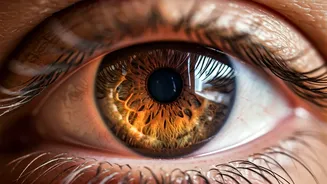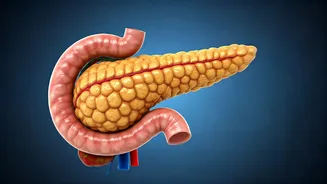The Coffee Conundrum
The world of coffee, a daily ritual for many, is now facing a new scrutiny. The buzz around instant coffee has taken a more serious turn, with the possible
impact on our vision at the heart of the discussion. Research, while still in its early stages, is hinting at a link between this convenient caffeine source and the health of our eyes. These studies, although not conclusive, are enough to spark interest. The investigation looks into how the ingredients in instant coffee may affect our eyes over time. It's an exploration that raises questions and encourages a closer look at what we consume regularly, prompting reflection on our habits and the potential risks involved.
Research Unveiled
The evidence of studies conducted shows that there may be a possible relationship between instant coffee and the health of our eyes. It is important to look at what they say to grasp the context. This early research shows that compounds in instant coffee might have an impact on the eye’s functions. These studies usually look at the long-term habits of those who consume coffee, watching for changes in the health of the eye. The researchers use various techniques, like vision tests and eye examinations, to monitor any changes and get a clear picture of how things progress. Although the findings are thought-provoking, the studies are still in their early phases. A cautious stance is advised as more research is required to fully understand these connections. The current evidence is not enough to declare definite causal relationships, and this warrants further research to understand the situation.
Deciphering the Details
To understand the context better, the specifics of these research findings must be considered. While the exact mechanics are still under research, the studies offer some hints. Certain components present in instant coffee have a higher concentration in comparison to brewed coffee, suggesting potential factors. These components may affect the different parts of the eye and, potentially, the blood vessels that deliver oxygen and nutrients to the eye. It is important to note that the impact may vary depending on how much coffee is consumed and how long it has been consumed for. This makes it challenging to establish a clear pattern. Due to these complexities, scientists emphasize the need for carefully structured experiments and comprehensive assessments to validate these links. For this reason, the research seeks to explore a complex relationship and to understand how these elements might work together to produce their outcomes.
Considering the Implications
The findings should be reviewed carefully to weigh the possible implications. If the early studies continue to suggest a link between instant coffee and eye health, there could be important ramifications for public health and people's health decisions. Considering the high usage of instant coffee around the world, understanding the scope of the risk is important. People would need to know the potential risks if the research shows a definite link. The researchers will be able to make specific suggestions to promote and support good eye health. This information may prompt individuals to re-evaluate their coffee consumption and choose healthier options to protect their eyesight. These discoveries would affect both personal health decisions and bigger public health plans.
Next Steps: What Now?
What action should we take in light of this data? Given the preliminary nature of the research, the need for moderation and mindfulness remains crucial. It's sensible to stay informed about upcoming developments in the field. Talking to ophthalmologists about individual health concerns is an excellent idea. Those with a family history of eye problems or who drink a lot of coffee can be especially cautious. By keeping up with the research, people can make well-informed decisions. This encourages a proactive stance to maintain eye health. Regular check-ups with a doctor are still essential. The idea is to make sure people are proactive and cautious about protecting their eyesight while waiting for more definitive data to emerge.













